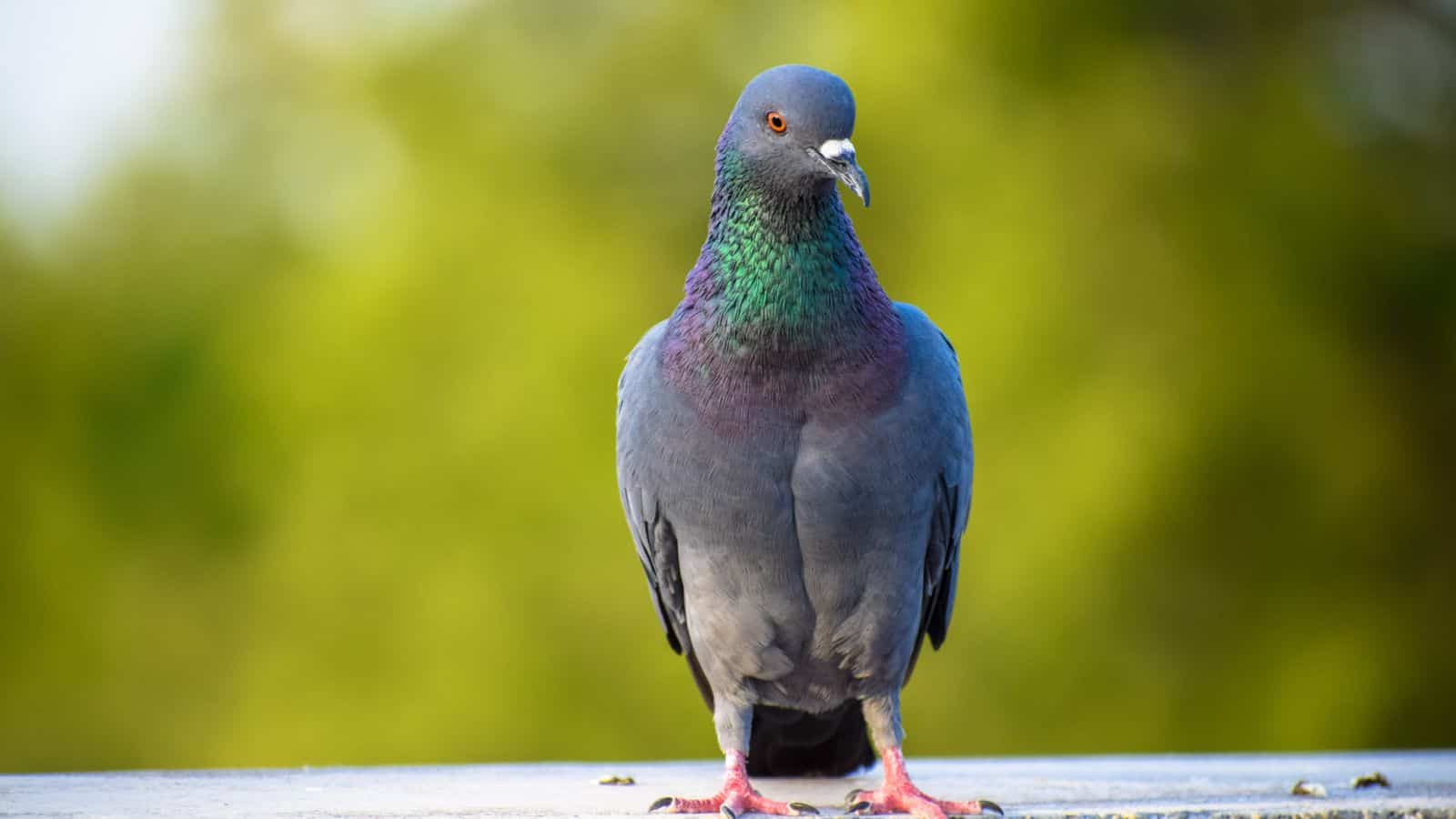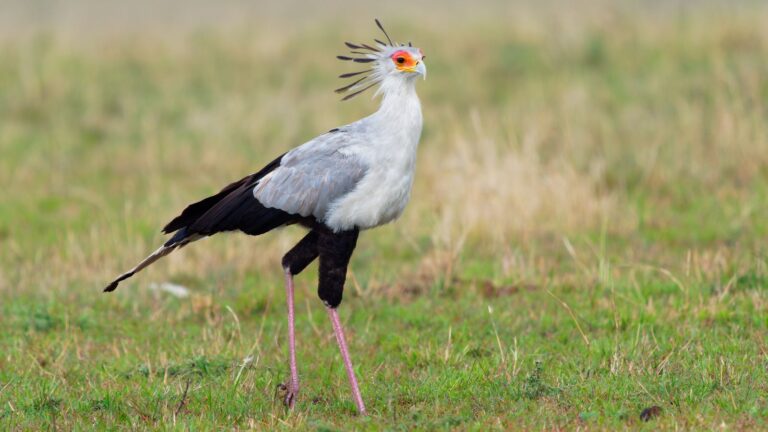Of the 11,000 species of birds that exist around the world, many have extraordinary features and abilities that lots of people don’t even know about. Today, we’ll look at 18 incredible facts about some specific birds that may surprise you!
The Lyrebird Can Mimic Almost Any Sound

In a courtship showcase, male lyrebirds mimic almost every sound they hear to attract the perfect mate. They can replicate a dog’s bark, a baby crying, a car’s horn, camera shutters, and even the calls of other birds around. And all these are thanks to their highly developed syrinx.
Flamingos Are Born Gray, Not Pink

Young flamingoes walk around with grey or white feathers, in contrast to the pink feathers that adults (and the entire species) are known for. This is the most natural form they can appear in. The pink color comes from their consistent diet of blue-green algae and crustaceans, and the more of this they consume, the more vibrantly pink they are.
The Kea Parrot Is One of the Smartest Animals

The intelligence of the kea parrot rivals that of the smartest monkey and primate species around, and this is owed to one trait—they understand probabilities. The BBC shares with us how the New Zealand kea uses probabilities and even historical knowledge to make choices for the present and future. They can also use tools and work together to achieve a goal.
Woodpeckers’ Tongues Wrap Around Their Brains

Woodpecker tongues are sticky and excellent at extracting insects from trees, but this isn’t all they’re used for. One of the more bizarre facts on our list is that woodpeckers wrap their brains with their tongues during pecking. They do this to cushion their brain and safeguard it from damage, given that they peck up to 20 times per second.
The Manakin Performs a Moonwalk Dance

Male manakins display elaborate dance routines to woo their female counterparts, and one of their courtship dances involves moonwalk-like moves. They move up and down tree branches, fly in circles, and even do acrobatic flips, too! And all these are accompanied by rapid wing beats to draw attention.
Pigeons Can Recognize Themselves in a Mirror

Unlike cats and dogs, which may engage in fights with their reflections, pigeons show a keen sense of self-awareness by recognizing themselves in mirrors. This was thought to be unique to humans and other great apes. They can even recognize differences in human faces.
The Shoebill Stork’s Unique Hunting Method

In addition to its eerie, prehistoric appearance, the shoebill stork comes with a painstakingly patient hunting technique. These animals can stand in a single spot, remaining motionless for hours while waiting for fish to come within striking distance. And, of course, when the opportunity arises, they strike and kill with immaculate precision.
The Great Grey Owl Can Hear Its Prey Under Snow

According to the University of California, Great grey owls have the ability to hear prey up to two feet beneath the snow! This apparent superpower makes them excellent hunters. Their facial discs enhance their hearing by redirecting sound to their ears, and they perform even better with low-frequency sounds. All these skills compensate for their relatively poor eyesight.
The Secretary Bird Hunts Like a Raptor but Walks Like a Crane

The beautiful secretary bird can fly but prefers to walk over 20 miles per day in search of food. It’s the only species of raptor known to do this, and it kills its prey, especially snakes, by delivering powerful kicks with incredible accuracy.
Hummingbirds Can Fly Backwards

Hummingbirds flap their wings so fast—about 50 times per second—and, thanks to this, they’re able to maintain precise control of their bodies. This enables them to hover perfectly in place like a helicopter and, of course, fly backward. In fact, they’re the only species of bird that’s able to do these two things.
Ostriches Have the Largest Eyes of Any Land Animal

The African elephant may be the largest and heaviest land mammal, but the GWR reveals that its eyes aren’t a match for an ostrich’s. Measured to be about two inches in diameter, the ostrich’s large eyes provide it with excellent vision and allow it to see predators from great distances. Its eyes are even larger than its brain!
Albatrosses Can Sleep While Flying

Albatrosses can lock their wings in place, fly over 600 miles in a single day without flapping their wings at all, and maintain speeds of 78 miles per hour while at it. This allows them to safely engage in unihemispheric slow-wave sleep over the sea, which is when one half of the brain sleeps and the other remains active.
Penguins Propose with Pebbles

Penguins are monogamous animals, staying with a single partner during mating seasons (not for life). When choosing a spouse, they borrow one thing from human romantic relationships, and that’s proposals. After finding the perfect stone, the male penguin presents it to the female, and the female accepts the proposal by placing it in her nest.
Some Birds Use Tools

Just like relatively intelligent primates such as chimpanzees and orangutans, crows, ravens, and rooks are well known to use sticks to extract food from trees. The New Caledonian crow is also the only bird known to create its own tools by modifying twigs, displaying advanced problem-solving and cognitive abilities.
The Arctic Tern Has the Longest Migration

Reindeer are admired for their ability to cover over 3,000 miles during their migration across North America. But this is meager compared to how far the Arctic tern migrates. National Geographic says it covers over 18,000 miles as a roundtrip from the Arctic Circle to the Antarctic Circle, making it the animal with the longest migration on Earth.
Owls Can Rotate Their Heads Almost 360 Degrees

Thanks to their unique skeletal structure and blood vessel system, owls can rotate their heads 270 degrees. They have adapted to prevent this rotation from stopping blood flow to their heads, which allows them to watch for prey from all angles, staying quiet without moving their bodies.
The Hoatzin Chick Has Claws on Its Wings

Hoatzins are born with two claws on each of their wings, as they need these to scramble around tree branches or climb back into the nest after falling into the water. These claws, then, disappear as they age. One other interesting fact about these birds is their nickname, ‘stinkbird,’ owing to their distinctive smell from fermenting leaves in their stomachs.
The African Jacana Walks on Water

Our list isn’t complete without the Jesus bird—the African Jacana. This bird is known to distribute weight using its toes and claws on lily pads (and other vegetation). This makes it look like it’s walking on water! This adaptation allows it to forage on insects and other foods in areas other competitors can’t reach.

